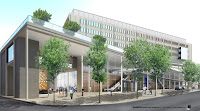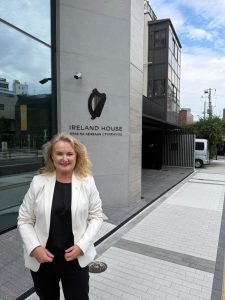I welcome the announcement that the new Emergency Department at the Mater Hospital will open on Sunday 17th February at 10pm.
To facilitate opening the new Emergency department Emergency services will be suspended at the Mater for 18 hours. The Department will close to walk-in (self arrival) patients from 4am until 10pm on Sunday 17th February. The relocation process requires the Department to close to ambulances from 10am to 10pm on Sunday 17th February. Patients with minor injuries can attend the Mater Smithfield Rapid Injury Clinic in The Forge, Smithfield Market, Dublin 7.
During this temporary closure period, patients that are seriously ill or injured should dial 999 or go directly to another Emergency Department.
Access and egress for members of the public and ambulances to the new Emergency Department in the new Whitty Building is via pedestrian and road access on Eccles Street. The new access is well signposted and situated approximately 100 metres from the Dorset Street end of Eccles Street. Pedestrian access is adjacent to the new car park ramp.
The Mater’s Emergency Department provides a 24-hour emergency service, 365 days a year, and sees in the region of 50,000 patients annually. The core function of the department is to provide resuscitation for critically ill and injured patients.
Accommodation in the new Emergency Department includes:
A resuscitation room; the resuscitation capacity of the new department provides an increase in excess of 60% capacity compared to present capability, reflecting the increase in the number of patients attending with critical illness and injury;
15 new single patient examination and treatment cubicles for patients with complex and urgent medical complaints;
A dedicated CT / X-ray suite;
An ambulatory care area for management of low impact trauma cases and ambulant patients suffering from less serious medical conditions; and
Space for liaison personnel (e.g. psychiatric liaison nurse, GP liaison nurse and a social worker).
A 12 bay acute medical assessment unit is accommodated in the acute floor in line with Clinical Care Programmes. Special attention has been paid to the quality of the physical environment for patients, staff and visitors, reflecting contemporary architecture and design. Importance has been placed on the maximisation of natural light into the facility. The design team has adopted an integrated design approach to support a low energy and sustainable design solution. Specific concepts were adopted at the outset of the design process. The work on these concepts within this project is of considerable significance because of the scale of savings in the energy consumption and associated reductions in CO2 emissions and its potential replication in Ireland and elsewhere.
For further information on the Mater Campus Hospital Development go to www.mater.ie
Mary





